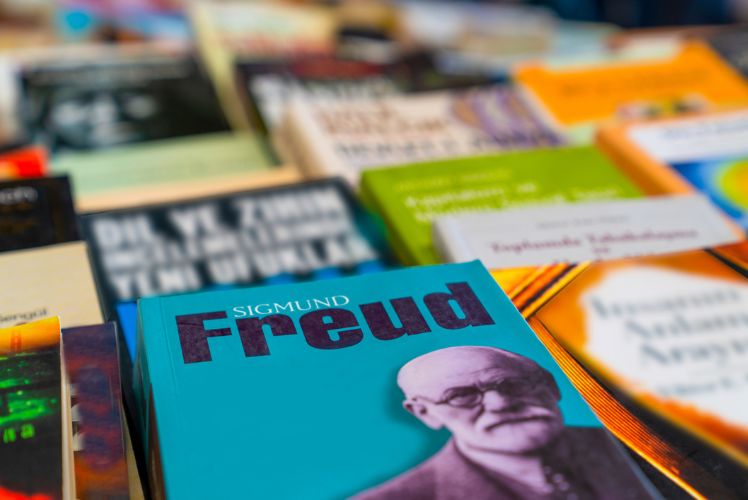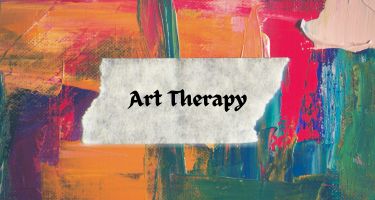Sigmund Freud is often called the father of psychoanalysis, a method that allows us to explore the depths of the human mind. Psychoanalysis works by examining our unconscious thoughts and feelings, helping us understand the behaviours we may not be aware of. This therapeutic approach uses various techniques, such as dream analysis and free association, to uncover hidden emotions and past experiences that shape who we are.

By understanding these underlying factors, we can gain insight into our current challenges and relationships. Freud's theories have evolved over time, but his core ideas still influence modern psychology. Many of us seek to know ourselves better, and psychoanalysis provides a valuable framework for that journey of self-discovery.
As we explore the fascinating world of psychoanalysis, we will discuss its foundational concepts, therapeutic techniques, and the impact it has had on our understanding of psychology. These insights will not only deepen our knowledge but also enrich our personal growth.
Key Takeaways
- Freud's psychoanalysis uncovers the unconscious mind.
- Techniques like dream analysis reveal hidden emotions.
- The principles of psychoanalysis shape modern psychological practices.
Foundations of Psychoanalysis

Psychoanalysis is built on key concepts that explain human behaviour and personality. Understanding the unconscious mind, Freud's structural model of personality, and stages of psychosexual development are essential to grasp the core ideas of this theory.
Concept of the Unconscious Mind
The unconscious mind is central to Freud's theory. It holds thoughts, memories, and desires that are not accessible to our conscious awareness. We often repress feelings that cause anxiety or discomfort, pushing them into this deeper part of the mind.
These repressed feelings can influence our actions and emotional responses. By exploring the unconscious, we seek to uncover these hidden thoughts through techniques like free association. This practice helps us access early experiences and unresolved conflicts that shape our behaviour.
Freud's Structural Model: Id, Ego, and Superego
Freud introduced a model of personality comprising three parts: the id, ego, and superego. The id represents our primitive instincts and desires. It operates on the pleasure principle, seeking immediate gratification of needs, including basic urges related to food, safety, and sex.
The ego serves as the rational part of our personality. It balances the demands of the id with the realities of our environment. Through defence mechanisms, the ego manages conflicts between desires and societal rules.
The superego embodies our moral standards and ideals. It develops through interactions with parents and society. The superego pushes us to conform to social norms and can create feelings of guilt when we fail to meet these expectations.
Psychosexual Development Stages
Freud outlined five stages of psychosexual development, each critical for shaping personality.
- Oral Phase (0-1 year): Focus on oral stimulation through activities like feeding and sucking.
- Sadistic-Anal Phase (1-3 years): Control and pleasure related to bowel and bladder control.
- Phallic Phase (3-6 years): Identification with parents; development of the Oedipus complex and related conflicts.
- Latency Stage (6-puberty): Sexual feelings are repressed; focus shifts to social skills and friendships.
- Genital Phase (puberty onwards): Maturing sexual interests and establishment of balanced relationships.
Fixation at any of these stages can lead to specific personality traits and behaviours in adulthood. Understanding these stages helps us comprehend how early experiences impact later life.
Psychoanalytic Therapy

Psychoanalytic therapy is an in-depth therapeutic approach focusing on the unconscious mind and its impact on our thoughts and behaviours. It relies on techniques like free association and dream analysis to explore hidden meanings, aiming to bring repressed feelings to the surface.
The Role of the Therapist
In psychoanalytic therapy, the therapist plays a vital role as a guide and facilitator. We establish a safe environment for our patients, allowing them to express thoughts freely. This process often involves listening actively and interpreting what is said. The therapist's neutrality is crucial; it enables patients to project their feelings onto us, setting the stage for deeper self-discovery.
By maintaining this therapeutic relationship, we can help identify patterns and themes in the patient's life. Understanding these patterns can lead to insights about unconscious motivations. It is important that we foster trust and openness, which promotes effective communication throughout the therapy process.
Techniques of Psychoanalytic Therapy
Several techniques define psychoanalytic therapy. One key method is free association, where patients express thoughts spontaneously without censorship. This can reveal hidden feelings and thoughts.
Another technique is dream analysis, which interprets dreams to uncover unconscious desires. Dreams can serve as a window into a person's internal world.
Additionally, hypnosis may sometimes be employed to access repressed memories and feelings. Each of these techniques aims to facilitate a deeper understanding of the self and promote healing through awareness.
Transference and Countertransference
Transference is a critical concept in our practice. It occurs when patients project feelings from past relationships onto us, the therapists. This can help reveal unresolved issues and dynamics that affect their current life. Recognising and analysing transference allows us to explore these significant emotions.
Countertransference, on the other hand, refers to our emotional reactions to the patient's transference. It requires self-awareness to avoid letting our feelings affect the therapeutic process. By managing countertransference, we can maintain a professional distance, ensuring the therapy remains focused on the patient's needs and experiences.
Dreams and Analysis

In psychoanalysis, dreams are vital for accessing our unconscious thoughts and desires. They offer a window into our hidden feelings and help us understand our inner conflicts. We explore the mechanisms behind dreaming and how to interpret the messages contained within dreams.
Mechanisms of Dreaming
Dreams arise during REM (Rapid Eye Movement) sleep and serve as a product of our unconscious mind. They often manifest as confusing and symbolic stories. Sigmund Freud distinguished between manifest content and latent content.
- Manifest content: This is what we remember after waking. It includes the actual events and images of the dream.
- Latent content: This reflects the hidden, true meaning of the dream, representing our repressed desires and emotions.
Our mind employs defence mechanisms to conceal these deeper wishes. This is where the role of repression becomes important. Repression keeps disturbing thoughts away from our conscious awareness, allowing us to dream without confronting uncomfortable truths.
Interpreting Dream Content
Interpreting dreams follows a systematic approach. Understanding the latent content can reveal insights into our unconscious processes. Freud suggested that dreams express hidden desires and thoughts in a disguised form.
We can use various methods to analyse dream content, such as:
- Free association: We speak freely about our thoughts on a dream, allowing hidden meanings to surface.
- Symbolism: Common symbols in dreams can indicate certain emotions or issues—like water representing emotions.
Through this psychoanalytic technique, we can uncover unconscious forces that drive our behaviours. Additionally, recognising Freudian slips, where we accidentally reveal our true feelings, can also tie back to our dreams. This deeper understanding can guide us toward personal growth and healing.
Psychology of the Self

In our exploration of the psychology of the self, we can see how defence mechanisms and repressed memories play crucial roles in shaping our mental well-being. These concepts help us understand anxiety, neuroses, and various mental illnesses.
Defence Mechanisms
Defence mechanisms are strategies we unconsciously use to protect ourselves from anxiety and guilt. They help us cope with feelings or thoughts that are too difficult to face directly.
Some common defence mechanisms include:
- Repression: This is where we push unwanted thoughts and feelings into our unconscious mind. It prevents us from confronting painful memories.
- Projection: Here, we attribute our own unacceptable feelings to others. For example, if we feel guilty about something, we might accuse someone else of being at fault.
Understanding these mechanisms helps us recognise how we manage emotional pain. Awareness can lead us towards healthier coping strategies.
Repressed Memories and Neuroses
Repressed memories can have a significant impact on our mental health. These are thoughts and memories we avoid because they cause us distress.
When we do not confront these memories, it can lead to neuroses, which are mental disorders that can cause anxiety, depression, and other emotional difficulties. For instance, a repressed traumatic experience may cause anxiety disorders later in life.
Repressed memories often surface through dreams or spontaneous recollections. Self-examination can aid in uncovering these hidden thoughts. Addressing these memories with compassion can promote healing and reduce their power over us.
Influence and Evolution of Psychoanalysis
Psychoanalysis has continuously evolved since Freud's time, influenced by various theorists who expanded on his ideas. This evolution has led to a broader understanding of human behaviour, personality, and mental health.
Jung, Adler, and Beyond
Carl Jung and Alfred Adler were two prominent figures who diverged from Freud's original ideas. Jung focused on concepts like the collective unconscious and archetypes, emphasising the shared experiences that shape human personality. His work introduced ideas about spiritual and mythological influences on behaviour.
Adler, on the other hand, developed Individual Psychology, which highlighted the importance of social factors and feelings of inferiority in shaping personality. He believed that striving for superiority is a key motivator for human behaviour. Both theorists expanded psychoanalytic theory, making it more inclusive of different aspects of human experience.
Melanie Klein and Object Relations Theory
Melanie Klein made significant contributions with her Object Relations Theory, which shifted the focus from the individual psyche to the relationships we form with others. She argued that early relationships, particularly with primary caregivers, are crucial to understanding personality development.
Klein's work emphasised the impact of these early interactions on mental health. She introduced new concepts such as the paranoid-schizoid and depressive positions, describing different ways individuals relate to their inner and outer worlds. This approach has provided valuable insights into human behaviour and informed therapeutic practices, highlighting the importance of interpersonal relationships in psychoanalytic treatment.
Critical Perspectives
Freud's contributions to psychology are significant, but they face important criticisms. We must examine both the challenges to his theories and how psychoanalysis is viewed in modern mental health practices.
Challenges to Freudian Theory
Critics have raised numerous challenges to Freudian theory. One major area of concern is the emphasis on sexual desire and aggression as primary instincts. Critics argue that this focus oversimplifies human behaviour and emotional development.
For example, Freud's case study of Little Hans illustrates how childhood events shape our psyche. However, many psychologists question whether such anecdotal evidence can be generalised. Additionally, concepts like psychosexual development have been critiqued for lacking empirical support.
Moreover, the idea of the pleasure-principle versus the reality-principle can be seen as overly deterministic. The belief that our conscience is primarily a product of suppressed instincts may overlook other factors, like social context and morality. Hence, these critiques highlight the need for a more comprehensive understanding of human behaviour.
Psychoanalysis in Modern Mental Health
Today, we see psychoanalysis as part of a broader range of therapeutic approaches. While traditional psychoanalytic treatment focuses on uncovering unconscious thoughts and feelings, modern therapies often emphasise cognitive and behavioural techniques.
Many practitioners now integrate aspects of Freud's theories with newer ideas. For instance, the concept of Eros remains relevant in discussions about love and relationships. However, there is a growing recognition that societal influences, such as civilization, affect emotional well-being.
Furthermore, conditions like hysteria are now understood within a wider framework that includes biological and social factors. We can appreciate Freud's contributions while recognising that our understanding of mental health is continually evolving. This evolution leads to more effective treatment options that better address the complexities of human behaviour.
Frequently Asked Questions
We can clarify some key aspects of Sigmund Freud's theories and psychoanalytic practice. This includes understanding his ideas on psychosexual development, therapy techniques, the unconscious mind, and the importance of dreams and slips of the tongue.
What are the core principles of Freud's theory of psychosexual development?
Freud's theory of psychosexual development consists of five stages: oral, anal, phallic, latency, and genital. Each stage focuses on different conflicts that shape personality.
During the oral stage, pleasure comes from oral activities, like sucking. The anal stage centres on toilet training and control.
The phallic stage involves awareness of gender differences, while the latency stage is marked by social and intellectual development. Finally, the genital stage is essential for mature sexual relationships.
Can you describe the primary techniques used in psychoanalytic therapy?
In psychoanalytic therapy, techniques like free association, dream interpretation, and transference are vital. Free association encourages patients to talk freely to uncover hidden thoughts and feelings.
Dream interpretation involves analysing dreams to reveal underlying desires. Transference occurs when patients project feelings about significant figures onto the therapist, allowing deeper insights.
How does Freud's concept of the unconscious mind influence personality theory?
The unconscious mind plays a crucial role in shaping our thoughts, behaviours, and personality. Freud suggested that unresolved conflicts and repressed memories reside in the unconscious.
These elements can affect decisions and relationships without our awareness. By exploring the unconscious, we can better understand our motivations and experiences.
What role do defence mechanisms play in psychoanalytic theory?
Defence mechanisms are strategies the ego uses to protect against anxiety and maintain self-esteem. Common mechanisms include repression, denial, and projection.
Repression involves pushing distressing thoughts out of awareness. Denial means refusing to accept reality, while projection involves attributing one’s own unacceptable feelings to others.
In what ways does psychoanalysis seek to uncover the meaning behind dreams?
Psychoanalysis views dreams as a pathway to the unconscious. We analyse symbols and feelings within dreams to uncover hidden desires and unresolved conflicts.
By understanding the content of our dreams, we can gain insights into our fears and motivations. This process often reveals deeper truths about ourselves.
How did Freud interpret the psychological significance of slips of the tongue?
Freud called slips of the tongue "Freudian slips." He believed these errors reveal hidden thoughts or feelings.
For example, saying one thing when we mean another can indicate unconscious desires or anxieties. By examining these slips, we gain insights into our inner conflicts and motivations.





















